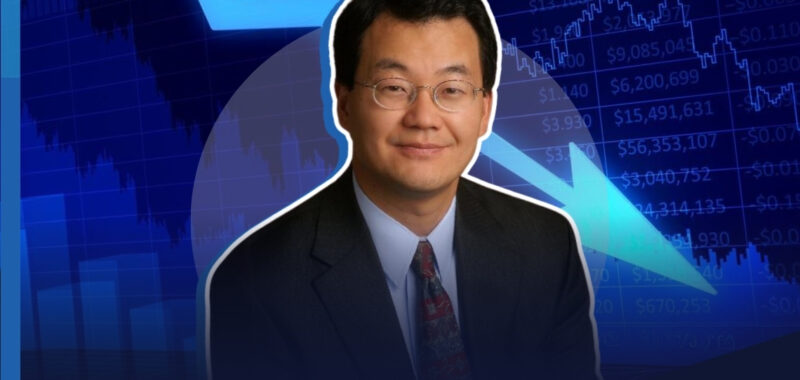Interest rates may be seeing their first cut this fall, possibly even as soon as September, according to the National Association of REALTORS®’ (NAR) Chief Economist Lawrence Yun. Yun shared this prediction and more during NAR’s recent Residential Real Estate Forecast Summit for 2024.
The biggest question looming on many in the industry’s minds is, when will the Fed start to cut interest rates? The Fed has previously stated they will cut interest rates once inflation, which they measure using government data including the Consumer Price Index and the Personal Consumption Expenditures Price Index, reaches 2%. Yun’s response to this is that the June CPI registered at 3%, and has been steadily decelerating, pointing toward rate cuts coming sooner rather than later.
“There is an expectation in Wall Street that there could be an interest rate cut this Autumn. It’s likely to be pre-presidential election,” Yun continued. “It seems like September looks to be the first rate cut, and then it will move on from that point.”
He also mentioned that community banks have been suffering under high interest rates, and that provides extra motivation for the Fed to cut interest rates.
“Maybe that’s why (Fed Chair) Jay Powell said he’s willing to cut interest rates even before inflation fully calms down…recognizing that community banks need some help now,” Yun said.
Yun also predicted that there will be six to eight rounds of Fed rate cuts all the way into 2025, rather than just two or three.
As the economy sees some normalization, Yun mentioned that credit spread will narrow, which will also provide some relief on high mortgage rates.
There are some future red flags that Yun pointed to, however, that could halt market normalization—a very large budget deficit, and the possibility that future rent prices could accelerate due to a supply shortage in two to three years from now.
Despite red flags, Yun summarized that he believes “long-term interest rates at least through 2025 will be calmer.”
Breaking down some of the current data and his future predictions for the housing market, Yun’s overview was that the housing market will soon start to normalize and grow as the economy does the same.
Pending contracts in May were the worst ever since 2001, according to Yun. In fact, NAR’s contract data for 2024 is almost at the same level as the large dip seen in 2020 due to the pandemic.
“Unlike back in the 2008 Great Recession period, it is not a question of lacking buyers. We still have multiple offers. And it’s also not a question about massive supply where it’s leading to home prices plunging. We don’t have enough supply, so we are hitting record-high home prices,” explained Yun. “What is needed in the current environment is more inventory.”
Yun went on to say that the lock-in effect—the buyers who secured a 3% to 4% mortgage rate pre-pandemic not wanting to sell—is still largely to blame for the lack of existing inventory growth.
Looking at actual sale closings, existing-home sales are still down from one year ago and from their 2021 peaks, but are “no longer declining in any measurable way,” as Yun said. In terms of the homebuilders market, new-home sales have mostly been rising for the past 12 months.
Existing- and new-home sales for 2024 are estimated by NAR to still be below their peak 2020 levels, currently resting at 4.09 million and 666,000, respectively (their 2020 counterparts registered at 5.64 million and 822,000, respectively). However, the homebuilders end of the market has definitely experienced more of a correction when comparing 2017’s (three years pre-pandemic) level of 613,000 to 2023’s (three years post-pandemic) level of 666,000.
“Builders can create inventory and they can do more sales. For existing homeowners, your past clients, they are loving their 3% mortgage rate, 4% mortgage rate, and they don’t want to list their property, (creating a) lack of inventory leading to this hindrance in home sales,” said Yun.
To give an even longer term horizon, Yun stated that existing-home sales are seeing the worst year since 1995. International buying is also down, registering at the lowest rate since 2009, due to the same factors of domestic buyers (lack of inventory) hindering the market.
Yun explained that some states are restricting international buying due to inventory issues, as “some states are saying, ‘Due to lack of inventory we want that precious little inventory to go to domestic buyers’—their local residents, and not to international buyers.”
As Yun mentioned earlier, existing-home sales are not decreasing as much as was previously seen. This is because NAR has recorded that existing inventory—despite seeing a lot of decreases as of late—is turning a corner and rising toward 1.5 million in 2024.
“Given that inventory is finally turning up, maybe this is an early indication, an early leading indicator that we may finally begin to see potentially more home sales as conditions improve,” said Yun.
When it comes to the previously mentioned lock-in effect that has been a thorn in the industry’s side, Yun said that these delayed sellers may not be able to wait much longer. He explained that life events—such as marriage, having children, divorce, retirement, death, new jobs and job switches—will push these delayed sellers into moving and adding their homes into existing inventory.
These more positive signs back up Yun’s ideology that the economy and the housing market will see better days soon.

